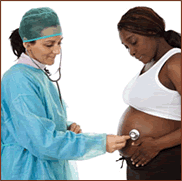Large
Meta-analysis Finds No Link between Efavirenz (Sustiva) and Birth
Defects
By
Liz Highleyman
 Current
antiretroviral
treatment guidelines recommend that HIV
positive pregnant women should not take efavirenz because
animal studies indicated a small risk of congenital abnormalities,
or birth defects. This recommendation was strongest for the first
3 months of gestation, the period when fetal organs are formed.
Current
antiretroviral
treatment guidelines recommend that HIV
positive pregnant women should not take efavirenz because
animal studies indicated a small risk of congenital abnormalities,
or birth defects. This recommendation was strongest for the first
3 months of gestation, the period when fetal organs are formed.
Nathan
Ford from Médecins Sans Frontières and colleagues
performed a systematic review and meta-analysis of available evidence
regarding the link between efavirenz and pregnancy outcomes.
The
study authors searched medical literature databases through January
2010 and searchable websites of major HIV conferences through
February 2010 to identify observational cohort studies reporting
birth outcomes among women exposed to efavirenz during the first
trimester of pregnancy.
The
primary endpoint was birth defects of any kind. The researchers
also looked at neural tube defects (a type of birth defect seen
in efavirenz animal studies), spontaneous abortions or miscarriages,
induced abortions or pregnancy terminations, stillbirths, and
preterm deliveries.
Results
 |
16
studies met the inclusion criteria, including 11 prospective
cohort studies and 5 retrospective reviews; about half were
conducted in resource-limited settings. |
 |
9
prospective studies reported birth defect rates among babies
born to women exposed or not exposed to efavirenz-containing
regimens during the first trimester. |
 |
35
birth abnormalities were reported among 1132 live births to
women exposed to efavirenz during early pregnancy. |
 |
289
birth defects were reported among 7163 live births to non-efavirenz-exposed
women. |
 |
The
overall incidence rate of birth defects among babies born
to women exposed to efavirenz was about 3% -- within ranges
reported for the general population in both industrialized
and developing countries. |
 |
Across
all studies, 1 neural tube defect (meningomyelocele) was observed
with first trimester efavirenz exposure, for an incidence
rate of 0.08%. |
 |
The
pooled relative risk of birth defects among women who used
efavirenz during early pregnancy was 0.87, not significantly
different from the rate among unexposed women (P = 0.45). |
Based
on these findings, the study authors concluded, "We found
no increased risk of overall birth defects among women exposed
to efavirenz during the first trimester of pregnancy compared
with exposure to other antiretroviral drugs."
"Prevalence
of overall birth defects with first trimester efavirenz exposure
was similar to the ranges reported in the general population,"
they continued. "However, the limited sample size for detection
of rare outcomes such as neural tube defects prevents a definitive
conclusion."
Investigator affiliations: Médecins Sans Frontières,
South Africa; Centre for
Infectious Disease Epidemiology and Research, University of Cape
Town, Cape Town, South Africa; Pediatric, Adolescent and Maternal
AIDS Branch, Center for Research for Mothers and Children, Eunice
Kennedy Shriver National Institute of Child Health and Human Development,
National Institutes of Health, Bethesda, MD; London School of
Hygiene and Tropical Medicine, London, UK; Faculty of Health Sciences,
Simon Fraser University, Vancouver, Canada; Red Cross Children's
hospital, Cape Town, South Africa; Faculty of Health Sciences,
University of Ottawa, Canada; Geneva University Hospital, HIV
Unit, Service of Infectious Diseases, Geneva, Switzerland.
6/15/10
Reference
N Ford, L Mofenson, K Kranzer, and others. Safety of efavirenz
in first-trimester of pregnancy: a systematic review and meta-analysis
of outcomes from observational cohorts. AIDS 24(10):1461-1470
(Abstract).
June 19, 2010.
